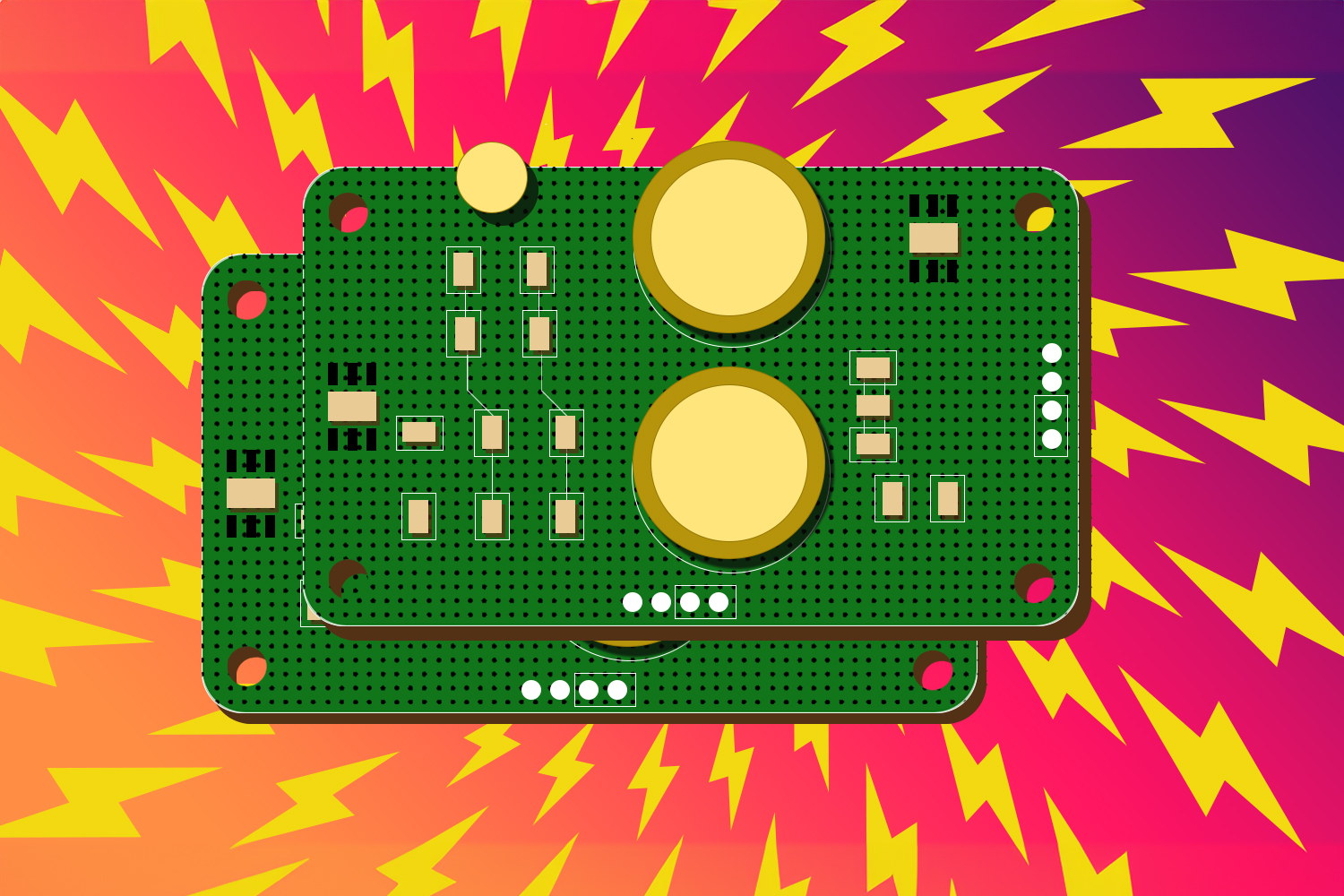Researchers have developed a platform combining automated experiments with AI to predict how chemicals will react, which could…
Rockstar Parent Company Take-Two Files Trademark Dispute Over Remedy’s Logo
Grand Theft Auto V developer Rockstar Games and Alan Wake 2 studio Remedy Entertainment have a history that goes back years, namely due to the two’s work on the Max Payne series. However, the companies are at the center of two trademark disputes filed by Rockstar’s parent company, Take-Two Interactive, as first reported by RespawnFirst. In the disputes, Take-Two takes issue with Remedy’s new logo it unveiled in April of last year, which features a stylized “R,” claiming it’s too similar to Rockstar’s own “R” logo.
The trademark disputes – here and here – were filed in the United Kingdom, and Take-Two, based in New York, is named as the “opponent” in it. The disputes were filed on May 11, 2023, which is a month after Remedy unveiled its new logo.

Notably, despite the trademark dispute, Rockstar and Remedy are working together on a remake package of Max Payne 1 and 2. In October of last year, Remedy said the Max Payne 1 & 2 remake, which is a single game, has “progressed into a production readiness stage.”
While waiting to learn more about this trademark conflict, read Game Informer’s review of Alan Wake 2, and then watch the official trailer for Grand Theft Auto VI, which Rockstar plans to release in 2025.
[Source: RespawnFirst]
Do you think these logos are similar enough to warrant a trademark dispute? Let us know in the comments below!
2K’s Tennis Series Returns After A Decade With TopSpin 2K25

2K’s tennis series is returning after more than a decade of dormancy with TopSpin 2K25, the company announced today. It did so with a quick teaser trailer revealing that it’s “coming soon.” Its announcement coincides with 2024’s first Grand Slam tennis tournament, the Australian Open, which began Saturday, January 13.
“Today, 2K revealed the return of TopSpin with the teaser trailer for TopSpin 2K25, the next must-play sports game from 2K that fully immerses fans into the world of tennis,” a press release reads. It also notes more information about the game is “to come.”
Watch the TopSpin 2K25 announcement teaser for yourself below:
[embedded content]
2K did not reveal a release date or a release window, but given that “25” is in the title, it’s likely releasing either this year or the next. The last TopSpin game was released in 2011 with Top Spin 4 during the Xbox 360/PlayStation 3 generation.
Are you going to check out TopSpin 2K25? Let us know in the comments below!
The Finals: New Update Includes Solo Bank It Mode, Bug Fixes, And More Anti-Cheat Measures

Developer Embark Studios surprise-launched its free-to-play FPS, The Finals, back in December – Game Informer documented everything that goes into a stealth release like this – and the game has continued to garner a strong fanbase. Now, just a little over a month since its release, Embark is set to release Update 1.5.0 and a new limited-time mode, Solo Bank It, tomorrow, January 17.
Embark calls this mode an “experimental” one, pitting 12 single players against each other in PvP matches. The first to obtain a total of 40,000 “Cash wins” takes home the win in Solo Bank It. Similar to standard Bank It, which is already in The Finals, contestants earn Cash by collecting and depositing Coins that drop from eliminated players; Coins can also be found in vaults around the map.
Watch The Finals Update 1.5.0 trailer for yourself below:
[embedded content]
Elsewhere in this update, Embark is fixing plenty of bugs and making balance changes as well. Plus, Update 1.5.0 “comes with a security update to anti-cheat and fair play” and a store update, too.
Update 1.5.0 and Solo Bank It go live in The Finals tomorrow, January 17.
For more, read Game Informer’s review of The Finals.
Are you still playing The Finals? Let us know in the comments below!
Wakerunners Is A High-Speed Competitive Romp From The Company Behind Dave The Diver

Wakerunners is the next game from developer Mintrocket, which made a name for itself last year with the excellent Dave the Diver. Mintrocket did confirm to us that Wakerunners is being developed by a different internal team (apparently it has a number of projects from distinct teams going at once), but the pedigree is still worth calling out.
As for the game itself, you can check out the game’s teaser trailer below.
[embedded content]
Technically, the game was soft-revealed in 2022 as Project TB and is a 4v4 and 5vr top-down competitive action game. The game follows a collection of factions trying to survive in a post-apocalyptic earth. The combat leans on a fast-paced system where players glide across the arena using acceleration and deceleration to their advantage as they engage in close-quarters combat. You will apparently be able to swap characters mid-battle, which will obviously affect strategies.
A demo will be available for the game during the next Steam Next Fest, which will include five different modes and seven playable characters. Right now the game is currently only confirmed for PC.
The Elder Scrolls: Castles Is A New Mobile Game From The Team Behind Fallout Shelter

Bethesda has announced The Elder Scrolls: Castles, a new mobile experience from the team behind Fallout Shelter.
Like Fallout Shelter, Castles is a management sim, with Bethesda stating in an X post that “you’ll build your own dynasty where every day in our world is a year in the game’s world. Citizens are born, they die, rulers change, and can be betrayed.” Players control their own castle over multiple generations of rulers, families, and subjects. Decision-making dictates how well your kingdom operates and how content your subjects are; unhappy citizens may plot to overthrow you.
Your castle can be expanded with new rooms and items, plus workstations for underlings. It appears to feature a turn-based combat system with players equipping heroes with gear to battle enemies and gather resources to grow their kingdom. Though the game’s App Store page states that it includes in-game purchases, it is unclear if Castles is free-to-play or not.
The Elder Scrolls: Castles has soft-launched in the Philippines and will become available in other regions over the next few months. It is the third mobile game in the series, following The Elder Scrolls: Blades, a traditional RPG, in 2019 and The Elder Scrolls: Legends, a collectible card game, in 2017.
Self-powered sensor automatically harvests magnetic energy

MIT researchers have developed a battery-free, self-powered sensor that can harvest energy from its environment.
Because it requires no battery that must be recharged or replaced, and because it requires no special wiring, such a sensor could be embedded in a hard-to-reach place, like inside the inner workings of a ship’s engine. There, it could automatically gather data on the machine’s power consumption and operations for long periods of time.
The researchers built a temperature-sensing device that harvests energy from the magnetic field generated in the open air around a wire. One could simply clip the sensor around a wire that carries electricity — perhaps the wire that powers a motor — and it will automatically harvest and store energy which it uses to monitor the motor’s temperature.
“This is ambient power — energy that I don’t have to make a specific, soldered connection to get. And that makes this sensor very easy to install,” says Steve Leeb, the Emanuel E. Landsman Professor of Electrical Engineering and Computer Science (EECS) and professor of mechanical engineering, a member of the Research Laboratory of Electronics, and senior author of a paper on the energy-harvesting sensor.
In the paper, which appeared as the featured article in the January issue of the IEEE Sensors Journal, the researchers offer a design guide for an energy-harvesting sensor that lets an engineer balance the available energy in the environment with their sensing needs.
The paper lays out a roadmap for the key components of a device that can sense and control the flow of energy continually during operation.
The versatile design framework is not limited to sensors that harvest magnetic field energy, and can be applied to those that use other power sources, like vibrations or sunlight. It could be used to build networks of sensors for factories, warehouses, and commercial spaces that cost less to install and maintain.
“We have provided an example of a battery-less sensor that does something useful, and shown that it is a practically realizable solution. Now others will hopefully use our framework to get the ball rolling to design their own sensors,” says lead author Daniel Monagle, an EECS graduate student.
Monagle and Leeb are joined on the paper by EECS graduate student Eric Ponce.
John Donnal, an associate professor of weapons and controls engineering at the U.S. Naval Academy who was not involved with this work, studies techniques to monitor ship systems. Getting access to power on a ship can be difficult, he says, since there are very few outlets and strict restrictions as to what equipment can be plugged in.
“Persistently measuring the vibration of a pump, for example, could give the crew real-time information on the health of the bearings and mounts, but powering a retrofit sensor often requires so much additional infrastructure that the investment is not worthwhile,” Donnal adds. “Energy-harvesting systems like this could make it possible to retrofit a wide variety of diagnostic sensors on ships and significantly reduce the overall cost of maintenance.”
A how-to guide
The researchers had to meet three key challenges to develop an effective, battery-free, energy-harvesting sensor.
First, the system must be able to cold start, meaning it can fire up its electronics with no initial voltage. They accomplished this with a network of integrated circuits and transistors that allow the system to store energy until it reaches a certain threshold. The system will only turn on once it has stored enough power to fully operate.
Second, the system must store and convert the energy it harvests efficiently, and without a battery. While the researchers could have included a battery, that would add extra complexities to the system and could pose a fire risk.
“You might not even have the luxury of sending out a technician to replace a battery. Instead, our system is maintenance-free. It harvests energy and operates itself,” Monagle adds.
To avoid using a battery, they incorporate internal energy storage that can include a series of capacitors. Simpler than a battery, a capacitor stores energy in the electrical field between conductive plates. Capacitors can be made from a variety of materials, and their capabilities can be tuned to a range of operating conditions, safety requirements, and available space.
The team carefully designed the capacitors so they are big enough to store the energy the device needs to turn on and start harvesting power, but small enough that the charge-up phase doesn’t take too long.
In addition, since a sensor might go weeks or even months before turning on to take a measurement, they ensured the capacitors can hold enough energy even if some leaks out over time.
Finally, they developed a series of control algorithms that dynamically measure and budget the energy collected, stored, and used by the device. A microcontroller, the “brain” of the energy management interface, constantly checks how much energy is stored and infers whether to turn the sensor on or off, take a measurement, or kick the harvester into a higher gear so it can gather more energy for more complex sensing needs.
“Just like when you change gears on a bike, the energy management interface looks at how the harvester is doing, essentially seeing whether it is pedaling too hard or too soft, and then it varies the electronic load so it can maximize the amount of power it is harvesting and match the harvest to the needs of the sensor,” Monagle explains.
Self-powered sensor
Using this design framework, they built an energy management circuit for an off-the-shelf temperature sensor. The device harvests magnetic field energy and uses it to continually sample temperature data, which it sends to a smartphone interface using Bluetooth.
The researchers used super-low-power circuits to design the device, but quickly found that these circuits have tight restrictions on how much voltage they can withstand before breaking down. Harvesting too much power could cause the device to explode.
To avoid that, their energy harvester operating system in the microcontroller automatically adjusts or reduces the harvest if the amount of stored energy becomes excessive.
They also found that communication — transmitting data gathered by the temperature sensor — was by far the most power-hungry operation.
“Ensuring the sensor has enough stored energy to transmit data is a constant challenge that involves careful design,” Monagle says.
In the future, the researchers plan to explore less energy-intensive means of transmitting data, such as using optics or acoustics. They also want to more rigorously model and predict how much energy might be coming into a system, or how much energy a sensor might need to take measurements, so a device could effectively gather even more data.
“If you only make the measurements you think you need, you may miss something really valuable. With more information, you might be able to learn something you didn’t expect about a device’s operations. Our framework lets you balance those considerations,” Leeb says.
“This paper is well-documented regarding what a practical self-powered sensor node should internally entail for realistic scenarios. The overall design guidelines, particularly on the cold-start issue, are very helpful,” says Jinyeong Moon, an assistant professor of electrical and computer engineering at Florida State University College of Engineering who was not involved with this work. “Engineers planning to design a self-powering module for a wireless sensor node will greatly benefit from these guidelines, easily ticking off traditionally cumbersome cold-start-related checklists.”
The work is supported, in part, by the Office of Naval Research and The Grainger Foundation.
Rising Concerns Over AI Hallucinations and Bias: Aporia’s 2024 Report Highlights Urgent Need for Industry Standards
A recent report from Aporia, a leader in the AI control platform sector, has brought to light some startling findings in the realm of artificial intelligence and machine learning (AI & ML). Titled “2024 AI & ML Report: Evolution of Models & Solutions,” the survey conducted…
Top 9 Ideas in the Travel App Development – Technology Org
The future of travel is bright, and 2024 is going to be an exciting year for travel tech….
The Science of Luck: Probability Theories Applied in Online Gambling Software – Technology Org
When people think about gambling, they frequently picture spinning roulette wheels, dice rolls and card flips. However, in…
